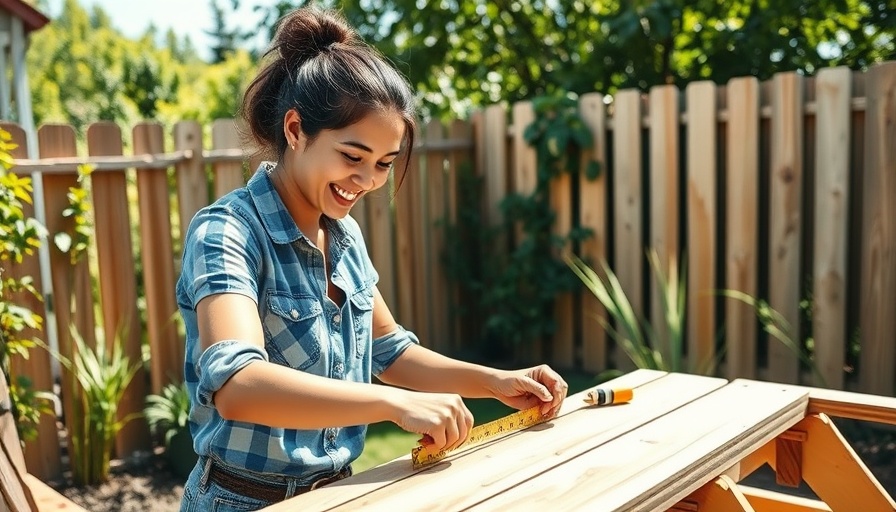
Embrace Green Projects: Simple Changes for a Sustainable Home
In a world where environmental concerns are climbing higher on everyone's agenda, the concept of going green has never felt more urgent or necessary. Fortunately, adopting sustainable practices at home doesn't have to break the bank or require extensive effort. Creative DIY projects offer a practical approach to reducing waste and enhancing our living spaces.
Reusable Cleaning Wipes: Cut Waste, Not Convenience
With Earth Day just behind us, have you considered the impact of single-use products like cleaning wipes? Traditional wipes are notorious for their role in polluting landfills because they are made of synthetic fibers that cannot be recycled or composted. Instead of contributing to the problem, why not switch to reusable cleaning wipes? By making your own wipes, you reduce waste while enjoying a much healthier living environment.
A quick DIY recipe from Pins and Procrastination provides an easy solution. By combining 1.5 cups of hot water with half a teaspoon of borax, a teaspoon of baking soda, and three tablespoons of rubbing alcohol, then adding optional essential oils for fragrance, you create a non-toxic cleaning solution. Pack these into recycled fabric wipes, and you're ready to go!
Raised Bed Gardening: A Green Thumb in Your Backyard
Starting your gardening adventure might seem daunting at first, especially if you're uncertain about your local soil quality. Fortunately, raised bed gardening offers a practical solution for both seasoned and novice gardeners. Constructing a raised bed not only provides control over soil quality but also helps with drainage, making maintainable gardening achievable.
Using reclaimed wood or eco-friendly materials for your raised beds not only keeps costs down but also feeds into a larger commitment to upcycling. Fill your beds with a mix of quality soil and compost, and you'll be setting the stage for a bountiful harvest while actively participating in environmental sustainability.
Transform Your Plastic Waste: Creative Upcycling Ideas
An essential element of sustainable living is upcycling, which involves creatively repurposing items destined for the landfill. This can include turning plastic bottles into plant pots or creating unique garden decorations from old utensils. By incorporating fun, creative projects like these into your routine, you’re actively participating in reducing your carbon footprint.
Why not engage your community in upcycling projects? Organizing neighborhood events can transform your community's engagement with waste and inspire collective action towards sustainability. You can even arrange local markets to showcase the innovative upcycling efforts of residents!
Composting: Natural Recycling in Action
Another essential DIY endeavor is composting, which is one of the easiest methods for recycling kitchen waste. By diverting organic waste from the landfill, composting not only reduces methane emissions generated by rotting garbage but also enriches soil moisture and nutrient content. This simple act not only fosters a zero-waste lifestyle but also contributes positively to garden health.
To start, designate a corner of your yard for compost, mix your green waste, such as vegetable scraps, with brown waste like dry leaves or cardboard. Rake it occasionally, and watch as it naturally turns into valuable compost to boost your garden's productivity!
Community Involvement in Sustainable Practices
Incorporating sustainability doesn't stop at individual actions; it empowers community involvement. Collaborate with local recycling centers to organize collection drives, making it easier for your neighborhood to dispose of household hazardous waste and e-waste responsibly. Use resources like a recycling guide to inform peers about proper disposal methods.
Consider creating flyers or holding workshops to educate others on green practices such as the benefits of recycling paper, plastic, and metals. Encourage everyone to understand their role in making a difference. After all, small steps taken collectively can lead to significant changes.Your Journey Towards Green Living Starts Now!
Adopting green DIY practices will not only improve your home and garden but also inspire those around you to consider their role in sustainability. Don’t view these projects as just simple DIY tasks; instead, recognize them as essential steps towards healthier living and meaningful environmental impact.
As you embark on these projects, remember that every little effort contributes to a larger movement—one that can ultimately reduce climate change effects and promote environmental sustainability. So roll up your sleeves, spark your creativity, and let’s make our homes a greener space!
If you’re inspired to take action, why not share your projects and tips with the wider community? Inspiring others can help spread the movement of eco-friendly living and create a network of support.
 Add Row
Add Row  Add
Add 




 Add Row
Add Row  Add
Add 

Write A Comment